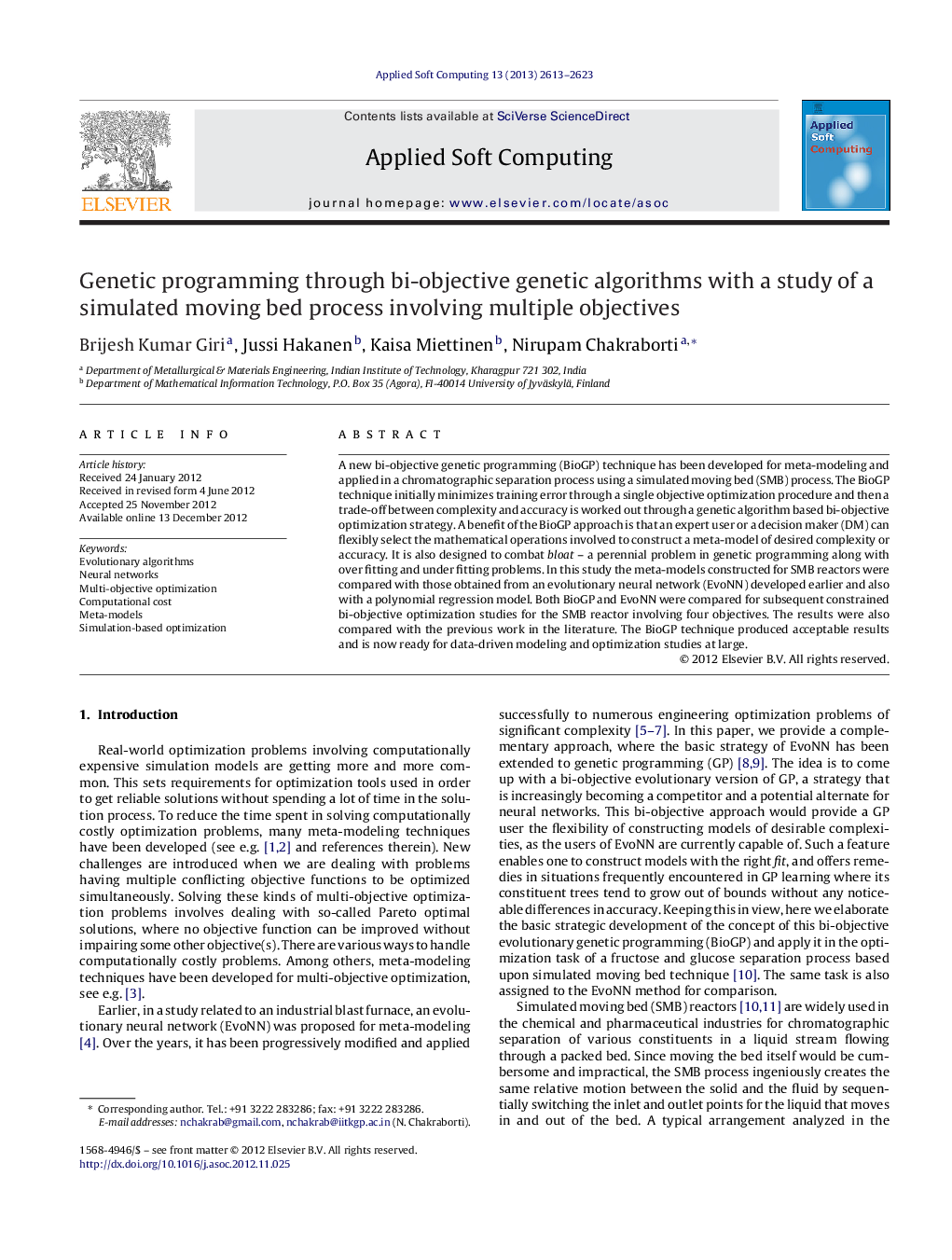| Article ID | Journal | Published Year | Pages | File Type |
|---|---|---|---|---|
| 495952 | Applied Soft Computing | 2013 | 11 Pages |
A new bi-objective genetic programming (BioGP) technique has been developed for meta-modeling and applied in a chromatographic separation process using a simulated moving bed (SMB) process. The BioGP technique initially minimizes training error through a single objective optimization procedure and then a trade-off between complexity and accuracy is worked out through a genetic algorithm based bi-objective optimization strategy. A benefit of the BioGP approach is that an expert user or a decision maker (DM) can flexibly select the mathematical operations involved to construct a meta-model of desired complexity or accuracy. It is also designed to combat bloat – a perennial problem in genetic programming along with over fitting and under fitting problems. In this study the meta-models constructed for SMB reactors were compared with those obtained from an evolutionary neural network (EvoNN) developed earlier and also with a polynomial regression model. Both BioGP and EvoNN were compared for subsequent constrained bi-objective optimization studies for the SMB reactor involving four objectives. The results were also compared with the previous work in the literature. The BioGP technique produced acceptable results and is now ready for data-driven modeling and optimization studies at large.
Graphical abstractFigure optionsDownload full-size imageDownload as PowerPoint slideHighlights► A new bi-objective genetic programming algorithm (BioGP) developed. ► BioGP compared with the existing evolutionary neural net algorithm (EvoNN). ► BioGP compared with a classical strategy. ► Ability of BioGP to counter the problem of bloat emphasized. ► BioGP and EvoNN applied to a simulated moving bed (SMB) process.
